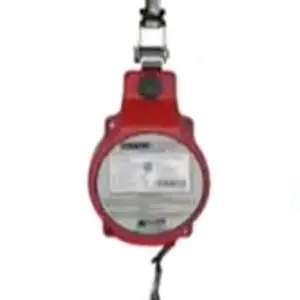Inspecting a self-retracting lifeline (SRL) is easy if you know what to look for. Here are some tips to help you get the most out of your inspection.
What is a self-retracting lifeline?
A self-retracting lifeline (SRL) is a type of personal fall arrest system that uses a reel-type device to automatically wind up the webbing or wire rope when not in use, and payout the webbing or wire rope when needed. The system generally includes an energy-absorbing lanyard to help stop a fall. When properly used, SRLs provide a high degree of safety for workers who are exposed to potential falls.
Why is it important to inspect a self-retracting lifeline?
It is important to inspect a self-retracting lifeline regularly to ensure that it is in good working condition. A self-retracting lifeline is a safety device that is used to protect workers from falls. If the device is not properly maintained, it can fail and cause serious injury or death.
Inspection of a self-retracting lifeline should be performed by a qualified person on a monthly basis. The inspection should include a visual examination of the unit, as well as a functional test. The inspection should also include a check of the manufacturer’s recommended inspection and maintenance schedule.
How often should a self-retracting lifeline be inspected?
It’s good practice to inspect your self-retracting lifeline (SRL) regularly. A general guideline is to inspect after every 50 uses or once a year, whichever comes first. You should also inspect your SRL if it’s been dropped, if it was used to support more than one worker at a time, or if it was used in an environment where it could have been damaged (for example, if it was dragged over sharp edges or exposed to chemicals).
What are the consequences of not inspecting a self-retracting lifeline?
If a self-retracting lifeline is not properly inspected, the consequences can be fatal. A self-retracting lifeline is a critical piece of safety equipment that is used to protect workers who are working at height. If the device is not inspected regularly, it can fail when it is needed most.
How can I tell if my self-retracting lifeline needs to be replaced?
Here are some things to look for when you inspect your SRL:
- Check the housing for cracks, dents, or other damage.
- Check the webbing for cuts, fraying, or other damage.
- Check the snap hook and carabiner for corrosion, cracks, dents, or other damage.
- Check the label to make sure the SRL hasn’t exceeded its maximum use limit.
If you notice any of these issues are present, it is best to replace the lifeline rather than risk it breaking while you are using it.
How do I inspect a self-retracting lifeline?
Here are instructions for how to inspect a self-retracting lifeline:
1. Check the date on the label to make sure the SRL is not expired.
2. Check the webbing for cuts, frays, or other damage.
3. Check the snap hook or carabiner for cracks, rust, or other damage.
4. Make sure there is no debris in the SRL housing.
5. Activate the SRL to make sure it locks properly when extended.
6. If you find any damage, do not use the SRL and contact your employer or supervisor immediately.
What are some common problems with self-retracting lifelines?
Self-retracting lifelines (SRLs) are a critical part of a fall protection system, and regular inspection is necessary to ensure that they will perform as intended in the event of a fall. Some common problems with SRLs that should be checked for during inspection include:
- Worn or frayed webbing
- Missing or damaged labels
- Excess wear on the housing
- Cracked or broken housing
- Corrosion on the internal components
- Binding, kinking or jamming of the webbing
- Missing or damaged energy absorber
As mentioned earlier, if any of these issues are present, seriously consider replacing the SRL.
How can I prevent problems with my self-retracting lifeline?
Inspect your self-retracting lifeline regularly to ensure that it is in good working order. Pay special attention to the following parts of the device:
- The housing
- The sheath
- The snap hook or carabiner
- The webbing or rope
If any of these parts are damaged, do not use the self-retracting lifeline and replace it immediately.
Where can I get more information about self-retracting lifelines?
For more information about self-retracting lifelines, refer to the manufacturer’s instructions or contact a Qualified Person.
What should I do if I have a problem with my self-retracting lifeline?
If you have any problems with your self-retracting lifeline, please contact the manufacturer immediately. If you notice any damage to your SRL, do not use it and replace it.
In Closing
Self-retracting lifelines are critical components for fall protection while working at heights. Always perform adequate inspections of your SRL regularly, as your safety depends on proper functioning.

